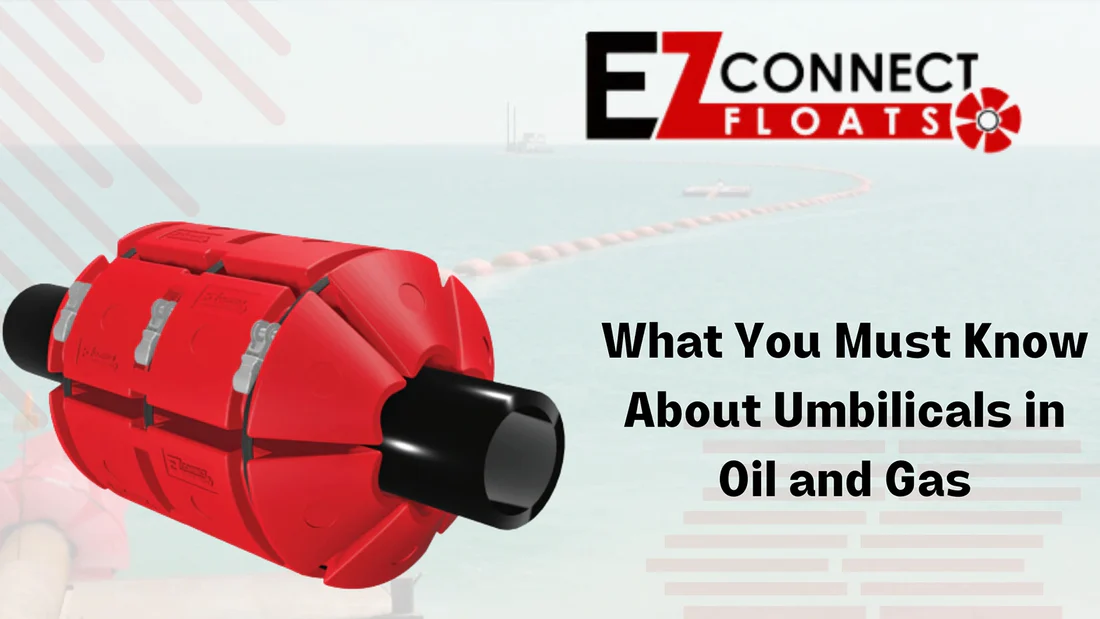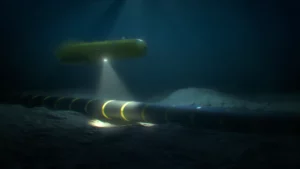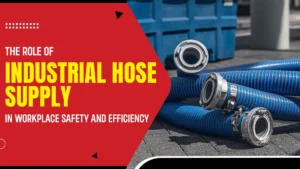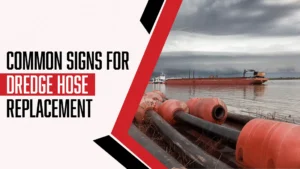
Umbilicals: Their Vital Role in Oil and Gas Operations
With the increasing demand for oil and gas, the importance of efficient production and exploration is at an all-time high. The global offshore oil and gas market is projected to grow at a 7% CAGR from 2023 to 2028, driving the need for reliable equipment.
Umbilicals, which are multi-function hoses or cables, are essential lifelines for subsea operations in the oil and gas industry. Another important component in oil and gas operations is pipeline floats. They ensure the buoyancy and stability of underwater pipelines. For reliable pipeline floats, consider EZ Connect Floats, widely used in offshore oil and gas projects.
What are umbilicals in the oil and gas industry?
Umbilicals in the oil and gas industry refer to specialized cables or hoses that serve as lifelines for subsea operations. They are designed to transfer power, fluids, and control signals between surface facilities and various underwater equipment such as subsea production systems, sensors, and control modules.
Umbilicals are typically composed of multiple components, including electrical conductors, hydraulic lines, and fiber optic cables, all bundled together in a protective outer sheath. These umbilicals play a crucial role in enabling efficient and reliable communication, power supply, and fluid transfer for subsea operations in the oil and gas sector.

Image: Umbilicals used as power cable
Applications of umbilicals in oil and gas
Umbilicals are the connectors between the offshore and the supply and control unit on the surface. Here are a few applications of umbilicals used in offshore oil and gas industry:
- Connection: Umbilicals are connected between the surface facilities (like oil platforms or drilling rigs) and the subsea equipment located underwater.
- Power transmission: They carry electrical power from the surface to the subsea equipment, enabling them to function.
- Fluid transfer: These under-sea connectors transport fluids such as hydraulic and chemical injection fluids, and control fluids to the subsea equipment.
- Control signals: They transmit control signals between the surface and subsea equipment through fiber optic signals. This allows operators to control and monitor the equipment remotely.
Communication: Umbilicals facilitate communication, instruction flow and data exchange between the surface and subsea equipment.

Image: Underwater umbilical subsea cable
Features of umbilicals in oil and gas
With numerous distinctive features, umbilicals in the oil and gas industry yield various advantages. Here, we have explained some of the key attributes.
- Protection: They are designed with layers of protective coatings and armor wires. This is done to withstand harsh offshore conditions like high pressure, extreme temperatures, and corrosive environments.
- Flexibility: Umbilicals are flexible enough to accommodate movement and dynamic forces in the offshore environment.
- Durability: The construction of umbilicals used in the oil and gas industry ensures reliability over long distances up to 100 kilometres. Their lifespan in oil and gas operations can range from 10 to 30 years.
- Customizable: They can be designed and manufactured to meet the specific requirements of a particular subsea production system.
- Remote monitoring: Offshore umbilicals in the oil and gas industry can be equipped with sensors. This enables remote monitoring of a subsea production system.
- Corrosion resistance: Oil and gas umbilicals are resistant to corrosion in offshore conditions.

Other industries where offshore umbilicals are used
Apart from the oil and gas offshore industry, umbilicals are used in several other sectors. One major sector is renewable energy where offshore wind farms utilize umbilicals to connect wind turbines.
Submarine telecommunications require high-speed data transmission and communication which are facilitated by umbilicals. Modern day oceanographic research also uses umbilicals as these are essential for powering scientific instruments and sensors used in underwater research.
Defence and naval operations is another big consumer of umbilical connectors. They are also used in remotely operated vehicles (ROVs) in defence and naval applications.
Why choose EZ Connect Floats?
If you are looking to buy pipeline floats for oil and gas operations, you have come to the right place. EZ Connect Floats is a leading provider of pipeline floats, hoses, and reflectors vastly used across industries. Our floats have a high level of buoyancy and are designed to perfectly fit on various hoses, cables, pipes and umbilicals.
Final Words
Umbilicals play a crucial role in the oil and gas industry as they connect surface facilities to underwater equipment, enabling the transfer of power, fluids, and communication. With their protective coatings, flexibility, and durability, umbilicals are designed to withstand harsh offshore conditions and can be customized to meet specific system requirements.
EZ Connect Floats offers a wide range of floats specifically designed to provide buoyancy and support to umbilicals in oil and gas applications.
To know more about our products, give us a call at 858-859-2385. You can also visit our website to send your project details.
Frequently Asked Questions (FAQs) about umbilicals in oil and gas
1. What is the service life of umbilicals in offshore oil and gas?
The service life of umbilicals used in offshore oil and gas production can vary depending on a variety of factors. Some factors are specific design, materials used, and operating conditions. Typically, umbilicals are designed to have a lifespan of up to 25 years or more. But this can vary depending on the specific application and maintenance practices.
2. What are the different types of umbilicals used in the oil and gas industry?
Umbilicals used in the oil and gas industry can be categorized into several types based on their specific functions. Some examples are hydraulic umbilicals, electro-hydraulic umbilicals, electro-optical umbilicals, and hybrid umbilicals. The type of umbilical used depends on the specific needs of the subsea production system.
3. What happens if an umbilical fails in a subsea production system?
If an umbilical fails in a subsea production system, it can lead to a loss of control and monitoring of the production process. This can potentially cause damage to the equipment and the environment. To mitigate this risk, regular inspections and maintenance are necessary to ensure the integrity and reliability of the umbilicals. Additionally, contingency plans and redundancies can be put in place to quickly address any failures or malfunctions.
4. What are subsea umbilicals used for?
Subsea umbilicals are typically constructed using various materials. They commonly consist of –
- Electrical conductors made of copper or aluminium for power and signal transmission,
- Hydraulic lines made of synthetic rubber or thermoplastic materials for fluid transfer, and
Fiber optic cables for communication purposes.
Have Questions?
Get in touch with us now!
Related Blogs

The Role of Industrial Hose Supply in Workplace Safety and Efficiency
In high-stakes industries such as oil and gas, mining, manufacturing, dredging, and defense, industrial hoses serve as vital connectors in daily operations. Whether transferring hazardous

Common Signs For Dredge Hose Replacement
Dredge hose is an essential component in mining, oil and gas, and heavy industries, where it is used to transport materials such as sediment, slurry,

The Role of Automation and AI in Next-Generation Dredging Technology
Dredging technology has undergone a quiet but powerful transformation over the past decade. A purely mechanical process, which included heavy machinery, manual supervision, and reactive
